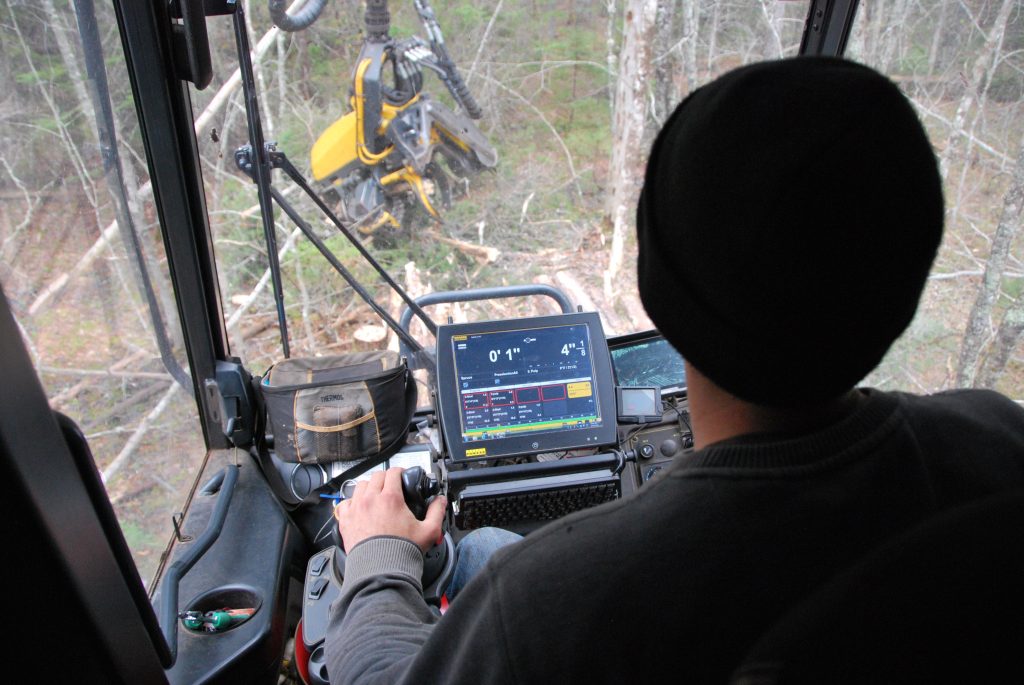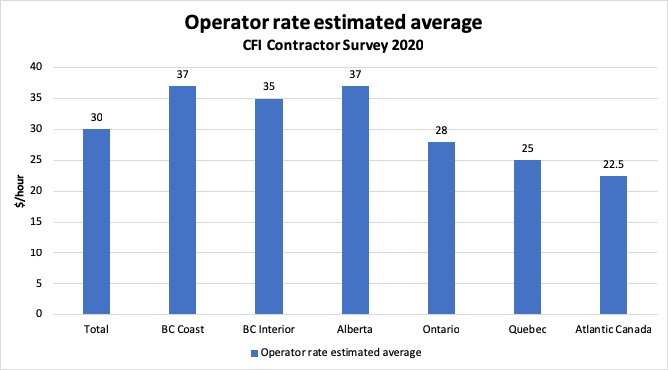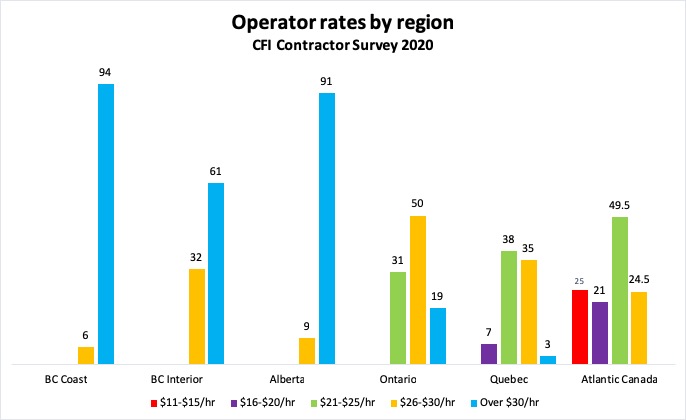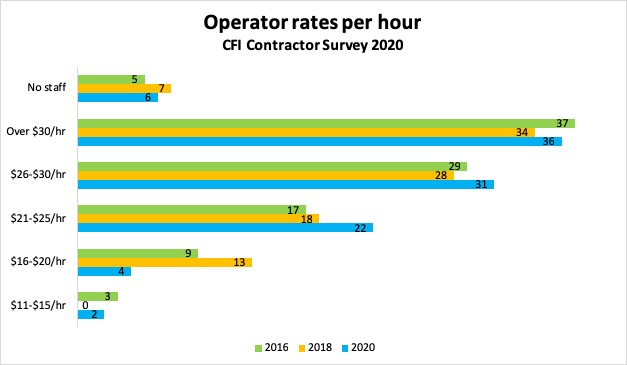
Features
Harvesting
Logging Profiles
Survey snippet 4: Operators’ earnings on the rise
September 1, 2020 By Ellen Cools
 Photo: Annex Business Media
Photo: Annex Business Media Results from CFI’s 2020 Contractor Survey show that forestry equipment operators and drivers across Canada are, on average, earning $30 per hour – a slight increase from the $29/hour they reported making in 2018.
Operators in the B.C. Coast continue to earn the most, but now operators in Alberta are also in the top bracket – both provinces have an average rate of $37 per hour.
Following the trend from 2018, operators’ rates decrease as you move east, with operators in Atlantic Canada earning the least (on average, $22.50/hour). But overall, the estimated average rate in all provinces either increased or remained the same as in 2018. These reported rates do not include benefits.

Estimates of contractor wages per hour based on the average of all responses.
But, the difference in rates from province to province is extremely noticeable when the data is broken down into wage ranges.
In the Western provinces, no contractors pay less than $26 per hour. In the B.C. Coast, 94 per cent of contractors pay over $30/hour, while the remaining six per cent pay $26-$30/hour. Alberta comes in a close second, with 91 per cent of contractors paying over $30/hour and the remaining nine per cent paying $26-$30/hour. In the B.C. Interior, a higher percentage of contractors pay $26-$30/hour (32 per cent) but the majority (61 per cent) still pay over $30/hour.
These numbers make sense given the nationwide labour shortage of operators and drivers, as well as the competition from other industries in the region such as oil and gas and mining.
Meanwhile, in Ontario, no contractors pay less than $21 per hour; half pay $26-$30 per hour, as in 2018. However, unlike in 2018, when zero per cent reported paying more than $30/hour, 19 per cent said so this year. On the whole, wage ranges in Ontario have increased.
But in Quebec, operator rates vary much more drastically than in 2018. Seven per cent earn $16-$20/hour, while three per cent earn over $30/hour. The bulk of contractors pay $21-$25/hour (38 per cent), followed closely by $26-$30/hour (35 per cent).
Jobs continue to be harder to find in Atlantic Canada, especially given the closure of Northern Pulp in Nova Scotia earlier this year. While the estimated average rate for Atlantic Canada’s operators has increased, the region is still the only one in the country where operators earn less than $16 per hour (25 per cent). No operators earn more than $30/hour. Nearly half (49.5 per cent) make $21-25/hour, with another 24.5 per cent earning $26-$30/hour.

Percentage of respondents reporting operator rates by region.
In comparison to the results from our 2018 survey, more operators are now making over $26/hour (67 per cent in 2020 versus 62 per cent in 2018). While the number of operators making $16-$20/hour has dropped quite a bit from 13 per cent in 2018 to four per cent in 2020, more operators are also making $21-$25 per hour (22 per cent compared to 18 per cent in 2018).
However, a handful more contractors reported earning $11-$15/hour (two per cent versus zero per cent in 2018), likely as a result of the challenges in Nova Scotia. Six per cent of the 2020 respondents say they do not hire operators/drivers.

Percentage of respondents reporting operator/driver rates in these ranges.
Missed last week’s survey snippet? Find a collection of reports published to date here. Look for more news from the CFI 2020 Contractor Survey in our eNews over the coming weeks, with a final digital report in December and a summary in the November/December print issue. Be sure to subscribe to our free eNews to get all the latest industry news.
This survey was conducted in April and May 2020 by independent research firm Bramm & Associates, generating 271 replies to a detailed list of questions. Respondents were distributed according to the geographic breakdown of the forest industry, with 44 per cent of respondents in Western Canada, 26 per cent in Quebec and the rest found in Ontario, Atlantic Canada, and central Canada. Within B.C., responses were split between the B.C. Coast and Interior. Many thanks to our sponsors for making this research possible – Hultdins, Tigercat and John Deere.
Print this page